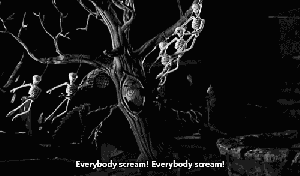According to buzzfeed.com, while making Nightmare Before Christmas, “Composer and lyricist Danny Elfman didn’t have a script to write the songs from. He asked Tim Burton to describe a scene and then Elfman would compose the song.” From a slightly biased composer’s perspective, this is an excellent example of how a film should be made.
Often, filmmakers don’t consider music or sound until the very end of the project. At which point, there is very little budget left, and all of the creative decisions have been made. The music must conform to the visuals; not a collaborative model at all. In my opinion, the music should influence the film and vice versa.
I learned this lesson from personal experience. As a graduate teaching assistant, I created an electronic music composition inspired by Federico García Lorca’s Poems of the Deep Song. It featured electronically manipulated classical guitar samples and a film by a very talented artist. My mistake was to write the music first, then expect the artist to make her film conform to my vision of the music and poetry. There are moments which work perfectly, but overall it would have been better if I had collaborated more closely with the artist from the beginning. In my case, I put the music first and the film second.
On the other hand, I worked on music and sound design for Interactive Science in 3d, an educational video game group at UGA funded by the National Institute of Health. It was a great collaborative experience. The game designers presented me and my colleague with an in-progress game. We composed a short piece for the opening scene and sent it back to them for approval. They liked it so much, they redesigned the beginning of the game to fit seamlessly with our music. The score inspired the design and vice versa. It was very effective and a lot of fun to see the final results. Check out the video below.
In my opinion, Nightmare Before Christmas is so successful because of the collaborative arrangement between Tim Burton and Danny Elfman. The music inspired the film’s visual design making it one of the greatest Halloween films of all time.
Can you name other films that follow this collaborative model?





